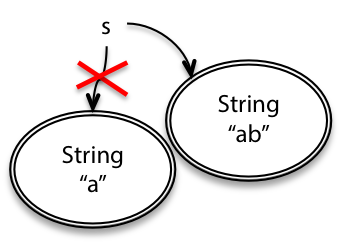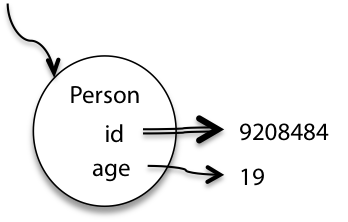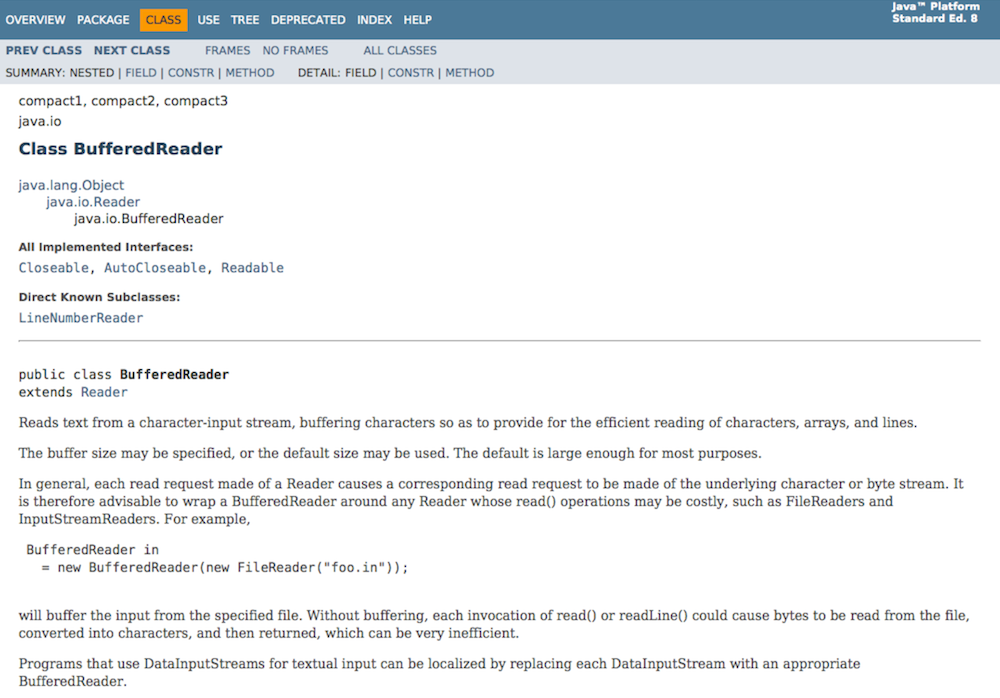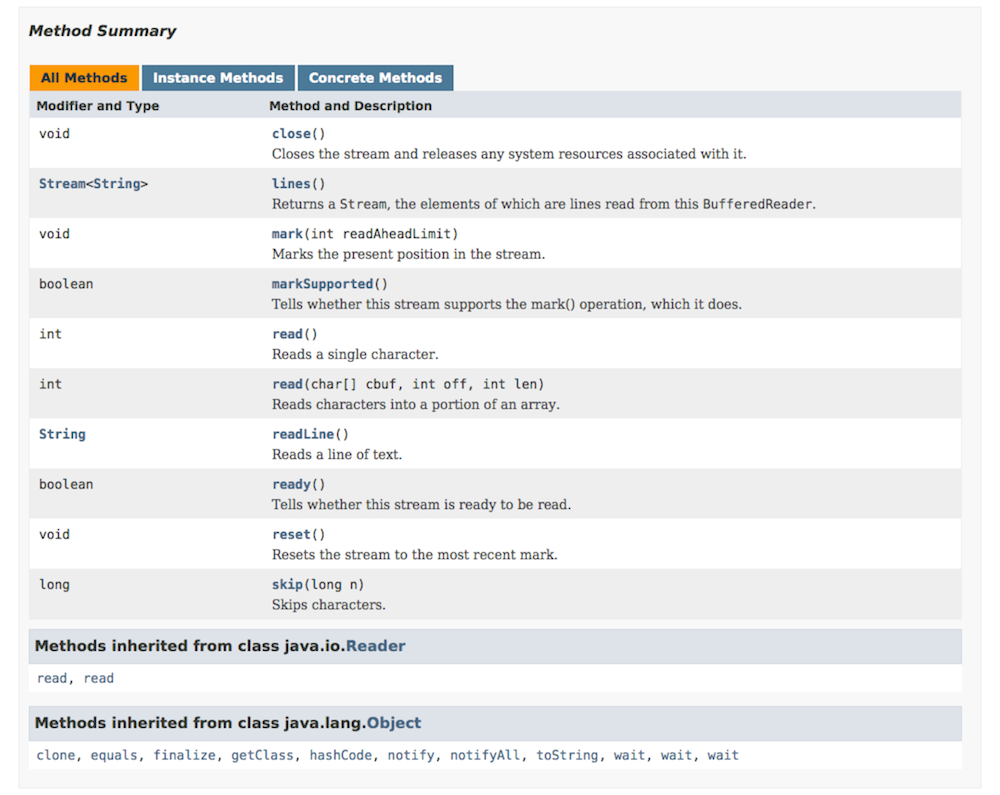Reading 2: Basic Java
Due the night before class: you must complete the reading exercises and Java Tutor exercises in this reading by Thursday, February 8 at 10:00 pm. These exercises are graded solely on completion, never on correctness, as described in the course general info.
Getting credit for reading exercises: on the right is a big red log in button. You will only receive credit for reading exercises if you are logged in when you do them.
Due before class: you must complete Problem Set 0 Part I before class on Friday, February 9 at 11:00 am.
Objectives
Software in 6.031
Getting started with Java
Read the first six sections of From Python to Java (27 short pages):
In the Java Tutor, complete the first two categories Basic Java and Numbers & Strings, so that they are fully checked off with a green checkmark, like this:
Then check your understanding by answering some questions about how the basics of Java compare to the basics of Python:
reading exercises
Snapshot diagrams
It will be useful for us to draw pictures of what’s happening at runtime, in order to understand subtle questions. Snapshot diagrams represent the internal state of a program at runtime – its stack (methods in progress and their local variables) and its heap (objects that currently exist).
Here’s why we use snapshot diagrams in 6.031:
- To talk to each other through pictures (in class and in team meetings)
- To illustrate concepts like primitive types vs. object types, immutable values vs. immutable references, pointer aliasing, stack vs. heap, abstractions vs. concrete representations.
- To help explain your design for your team project (with each other and with your TA).
- To pave the way for richer design notations in subsequent courses. For example, snapshot diagrams generalize into object models in 6.170.
Although the diagrams in this course use examples from Java, the notation can be applied to any modern programming language, e.g., Python, JavaScript, C++, Ruby.
Primitive values

Primitive values are represented by bare constants. The incoming arrow is a reference to the value from a variable or an object field.
Object values

An object value is a circle labeled by its type.
When we want to show more detail, we write field names inside it, with arrows pointing out to their values.
For still more detail, the fields can include their declared types. Some people prefer to write x:int instead of int x, but both are fine.
Mutating values vs. reassigning variables
Snapshot diagrams give us a way to visualize the distinction between changing a variable and changing a value:
When you assign to a variable or a field, you’re changing where the variable’s arrow points. You can point it to a different value.
When you assign to the contents of a mutable value – such as an array or list – you’re changing references inside that value.
Reassignment and immutable values

For example, if we have a String variable s, we can reassign it from a value of "a" to "ab".
String s = "a";
s = s + "b";String is an example of an immutable type, a type whose values can never change once they have been created.
Immutability (immunity from change) is a major design principle in this course, and we’ll talk much more about it in future readings.
Immutable objects (intended by their designer to always represent the same value) are denoted in a snapshot diagram by a double border, like the String objects in our diagram.
Mutable values

By contrast, StringBuilder (another built-in Java class) is a mutable object that represents a string of characters, and it has methods that change the value of the object:
StringBuilder sb = new StringBuilder("a");
sb.append("b");These two snapshot diagrams look very different, which is good: the difference between mutability and immutability will play an important role in making our code safe from bugs.
Immutable references
Java also gives us immutable references: variables that are assigned once and never reassigned.
To make a reference immutable, declare it with the keyword final:
final int n = 5;
If the Java compiler isn’t convinced that your final variable will only be assigned once at runtime, then it will produce a compiler error.
So final gives you static checking for immutable references.
In a snapshot diagram, an immutable reference (final) is denoted by a double arrow. Here’s an object whose id never changes (it can’t be reassigned to a different number), but whose age can change.
Notice that we can have an immutable reference to a mutable value (for example: final StringBuilder sb) whose value can change even though we’re pointing to the same object.
We can also have a mutable reference to an immutable value (like String s), where the value of the variable can change because it can be re-pointed to a different object.
Java Collections
Read the Collections section of From Python to Java (6 short pages).
Lists, Sets, and Maps
A Java List is similar to a Python list.
A List contains an ordered collection of zero or more objects, where the same object might appear multiple times.
We can add and remove items to and from the List, which will grow and shrink to accomodate its contents.
In a snapshot diagram, we represent a List as an object with indices drawn as fields:
This list of cities might represent a trip from Boston to Bogotá to Barcelona.
A Map is similar to a Python dictionary.
In Python, the keys of a map must be hashable.
Java has a similar requirement that we’ll discuss when we confront how equality works between Java objects.
In a snapshot diagram, we represent a Map as an object that contains key/value pairs:
This turtles map contains Turtle objects assigned to String keys: Bob, Buckminster, and Buster.
A Set is an unordered collection of zero or more unique objects.
Like a mathematical set or a Python set – and unlike a List – an object cannot appear in a set multiple times.
Either it’s in or it’s out.
Like the keys of a map, the objects in a Python set must be hashable, and Java has a similar requirement.
In a snapshot diagram, we represent a Set as an object with no-name fields:
Here we have a set of integers, in no particular order: 42, 1024, and -7.
Literals
Python provides convenient syntax for creating lists:
lst = [ "a", "b", "c" ]map = { "apple": 5, "banana": 7 }Java does not. It does provide a literal syntax for arrays:
String[] arr = { "a", "b", "c" };But this creates an array, not a List.
We can use the utility function Arrays.asList to create a List from the array:
Arrays.asList(new String[] { "a", "b", "c" })Arrays.asList("a", "b", "c")A List created with Arrays.asList does come with a restriction: its length is fixed.
Generics: declaring List, Set, and Map variables
Unlike Python collection types, with Java collections we can restrict the type of objects contained in the collection. When we add an item, the compiler can perform static checking to ensure we only add items of the appropriate type. Then, when we pull out an item, we are guaranteed that its type will be what we expect.
Here’s the syntax for declaring some variables to hold collections:
List<String> cities; // a List of Strings
Set<Integer> numbers; // a Set of Integers
Map<String,Turtle> turtles; // a Map with String keys and Turtle valuesBecause of the way generics work, we cannot create a collection of primitive types.
For example, Set<int> does not work.
However, as we saw earlier, ints have an Integer wrapper we can use (e.g. Set<Integer> numbers).
In order to make it easier to use collections of these wrapper types, Java does some automatic conversion.
If we have declared List<Integer> sequence, this code works:
sequence.add(5); // add 5 to the sequence
int second = sequence.get(1); // get the second elementArrayLists and LinkedLists: creating Lists
As we’ll see soon enough, Java helps us distinguish between the specification of a type – what does it do? – and the implementation – what is the code?
List, Set, and Map are all interfaces: they define how these respective types work, but they don’t provide implementation code.
There are several advantages, but one potential advantage is that we, the users of these types, get to choose different implementations in different situations.
Here’s how to create some actual Lists:
List<String> firstNames = new ArrayList<String>();
List<String> lastNames = new LinkedList<String>();If the generic type parameters are the same on the left and right, Java can infer what’s going on and save us some typing:
List<String> firstNames = new ArrayList<>();
List<String> lastNames = new LinkedList<>();ArrayList and LinkedList are two implementations of List.
Both provide all the operations of List, and those operations must work as described in the documentation for List.
In this example, firstNames and lastNames will behave the same way; if we swapped which one used ArrayList vs. LinkedList, our code will not break.
Unfortunately, this ability to choose is also a burden: we didn’t care how Python lists worked, why should we care whether our Java lists are ArrayLists or LinkedLists?
Since the only difference is performance, for 6.031 we don’t.
HashSets and HashMaps: creating Sets and Maps
HashSet is our default choice for Sets:
Set<Integer> numbers = new HashSet<>();Java also provides sorted sets with the TreeSet implementation.
And for a Map the default choice is HashMap:
Map<String,Turtle> turtles = new HashMap<>();Iteration
List<String> cities = new ArrayList<>();
Set<Integer> numbers = new HashSet<>();
Map<String,Turtle> turtles = new HashMap<>();A very common task is iterating through our cities/numbers/turtles/etc.
In Python:
for city in cities:
print(city)
for num in numbers:
print(num)
for key in turtles:
print("%s: %s" % (key, turtles[key]))Java provides a similar syntax for iterating over the items in Lists and Sets.
for (String city : cities) {
System.out.println(city);
}
for (int num : numbers) {
System.out.println(num);
}We can’t iterate over Maps themselves this way, but we can iterate over the keys as we did in Python:
for (String key : turtles.keySet()) {
System.out.println(key + ": " + turtles.get(key));
}Under the hood this kind of for loop uses an Iterator, a design pattern we’ll see later in the class.
Warning: be careful not to mutate a collection while you’re iterating over it. Adding, removing, or replacing elements disrupts the iteration and can even cause your program to crash. We’ll discuss the reason in more detail in a future class. Note that this warning applies to Python as well. The code below does not do what you might expect:
numbers = [100,200,300]
for num in numbers:
numbers.remove(num) # danger!!! mutates the list we're iterating over
print(numbers) # list should be empty here -- is it?Iterating with indices
If you want to, Java provides different for loops that we can use to iterate through a list using its indices:
for (int ii = 0; ii < cities.size(); ii++) {
System.out.println(cities.get(ii));
}Unless we actually need the index value ii, this code is verbose and has more places for bugs to hide.
Avoid.
reading exercises
Java Maps work like Python dictionaries.
After we run this code:
Map<String, Double> treasures = new HashMap<>();
String x = "palm";
treasures.put("beach", 25.);
treasures.put("palm", 50.);
treasures.put("cove", 75.);
treasures.put("x", 100.);
treasures.put("palm", treasures.get("palm") + treasures.size());
treasures.remove("beach");
double found = 0;
for (double treasure : treasures.values()) {
found += treasure;
}(missing explanation)
Enumerations
Sometimes a type has a small, finite set of immutable values, such as:
- months of the year: January, February, …, November, December
- days of the week: Monday, Tuesday, …, Saturday, Sunday
- compass points: north, south, east, west
- available colors: black, gray, red, …
When the set of values is small and finite, it makes sense to define all the values as named constants, which Java calls an enumeration and expresses with the enum construct.
public enum Month {
JANUARY, FEBRUARY, MARCH, APRIL,
MAY, JUNE, JULY, AUGUST,
SEPTEMBER, OCTOBER, NOVEMBER, DECEMBER;
}
public enum PenColor {
BLACK, GRAY, RED, PINK, ORANGE,
YELLOW, GREEN, CYAN, BLUE, MAGENTA;
}You can use an enumeration type name like PenColor in a variable or method declaration:
PenColor drawingColor;Refer to the values of the enumeration as if they were named static constants:
drawingColor = PenColor.RED;Note that an enumeration is a distinct new type. Older languages, like Python 2 and early versions of Java, tend to use numeric constants or string literals to represent a finite set of values like this. But an enumeration is more typesafe, because it can catch mistakes like type mismatches:
int month = TUESDAY; // no error if integers are used
Month month = DayOfWeek.TUESDAY; // static error if enumerations are used String color = "REd"; // no error, misspelling isn't caught
PenColor drawingColor = PenColor.REd; // static error when enumeration value is misspelledPython 3 now has enumerations, similar to Java’s, though not statically type-checked.
Java API documentation
Previous sections in this reading have a number of links to documentation for classes that are part of the Java platform API.
API stands for application programming interface. If you want to program an app that talks to Facebook, Facebook publishes an API (more than one, in fact, for different languages and frameworks) you can program against. The Java API is a large set of generally useful tools for programming pretty much anything.
java.lang.Stringis the full name forString. We can create objects of typeStringjust by using"double quotes".java.lang.Integerand the other primitive wrapper classes. Java automagically converts between primitive and wrapped (or “boxed”) types in most situations.java.util.Listis like a Python list, but in Python, lists are part of the language. In Java,Lists are implemented in… Java!java.util.Mapis like a Python dictionary.java.io.Filerepresents a file on disk. Take a look at the methods provided byFile: we can test whether the file is readable, delete the file, see when it was last modified…java.io.FileReaderlets us read text files.java.io.BufferedReaderlets us read in text efficiently, and it also provides a very useful feature: reading an entire line at a time.
Let’s take a closer look at the documentation for BufferedReader.
There are many things here that relate to features of Java we haven’t discussed!
Keep your head and focus on the things in bold below.

At the top of the page is the class hierarchy for BufferedReader and a list of implemented interfaces.
A BufferedReader object has all of the methods of all those types (plus its own methods) available to use.
Next we see direct subclasses, and for an interface, implementing classes.
This can help us find, for example, that HashMap is an implementation of Map.
Next up: a description of the class. Sometimes these descriptions are a little obtuse, but this is the first place you should go to understand a class.

If you want to make a new BufferedReader the constructor summary is the first place to look.
Constructors aren’t the only way to get a new object in Java, but they are the most common.

Next: the method summary lists all the methods we can call on a BufferedReader object.
Below the summary are detailed descriptions of each method and constructor. Click a constructor or method to see the detailed description. This is the first place you should go to understand what a method does.
Each detailed description includes:
Specifications
These detailed descriptions are specifications.
They allow us to use tools like String, Map, or BufferedReader without having to read or understand the code that implements them.
Reading, writing, understanding, and analyzing specifications will be one of our first major undertakings in 6.031, starting in a few classes.
reading exercises
Reading exercises
At this point you should have completed all the reading exercises above. Completing the reading exercises prepares you for the nanoquiz at the beginning of each class meeting. To check your reading exercise status, see classes/02-basic-java on Omnivore. Submitting the exercises is required by 10pm the evening before class.
At this point you should have also completed the Java Tutor levels shown below. Java Tutor exercises are also due 10pm the evening before class.